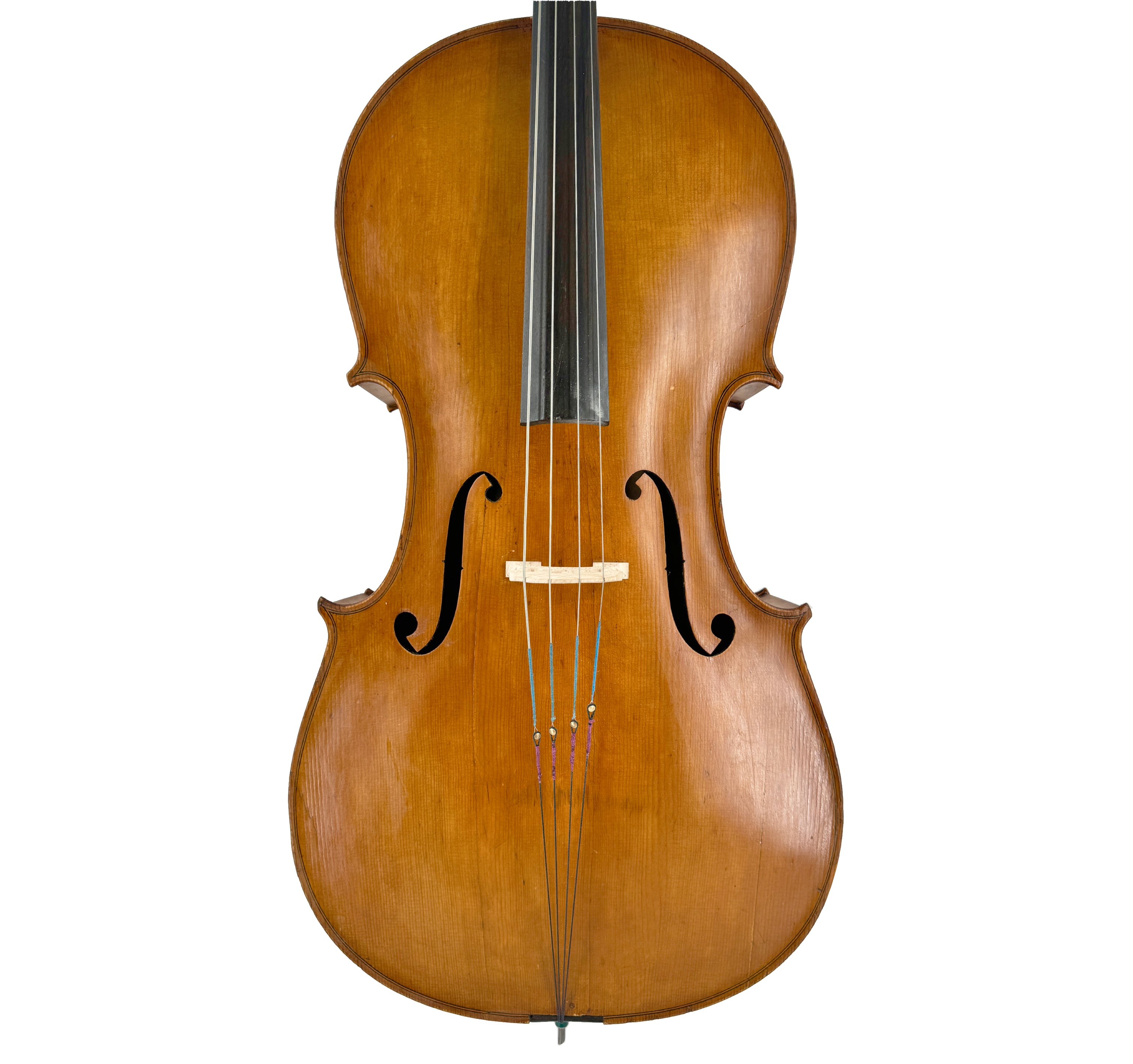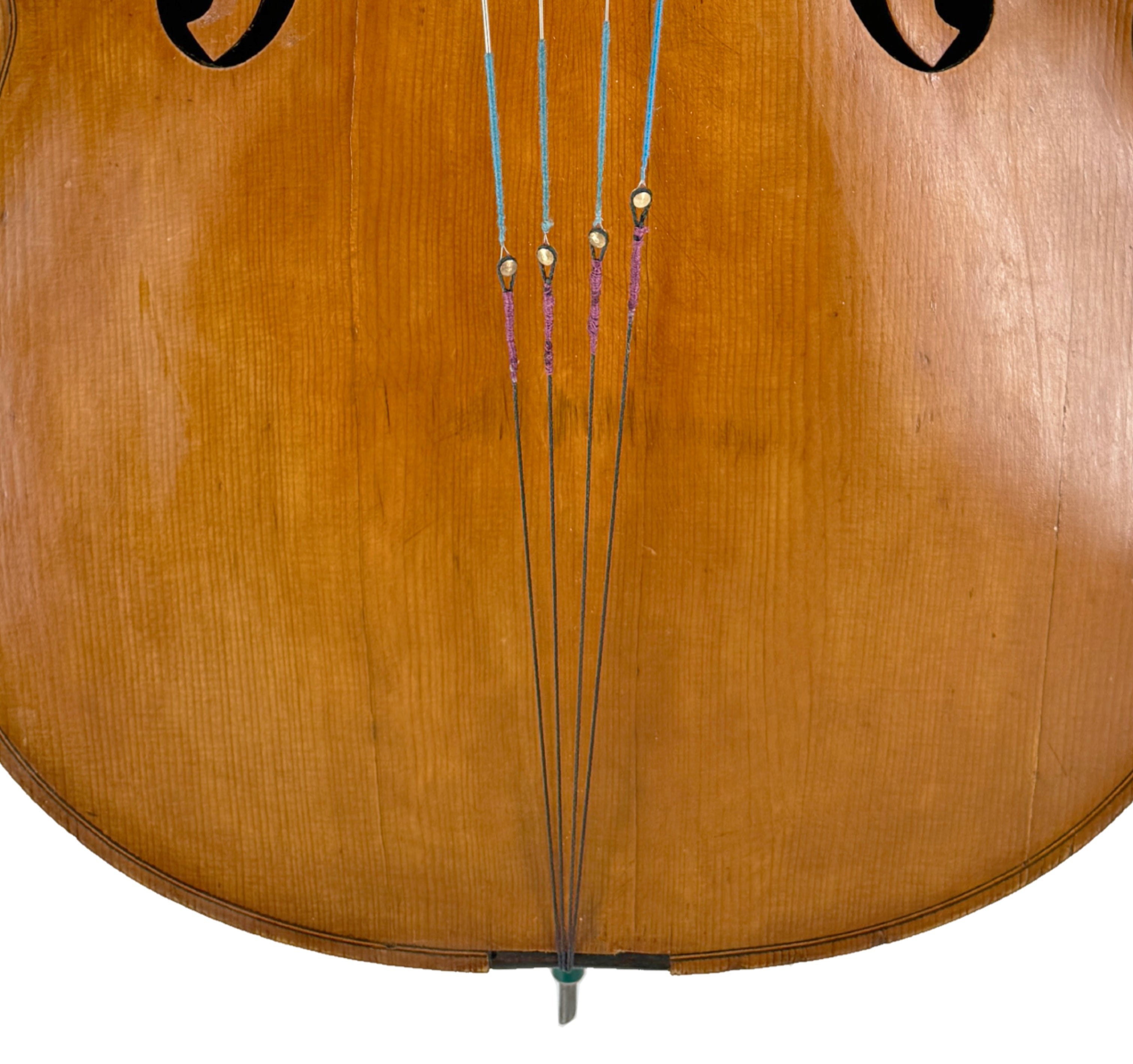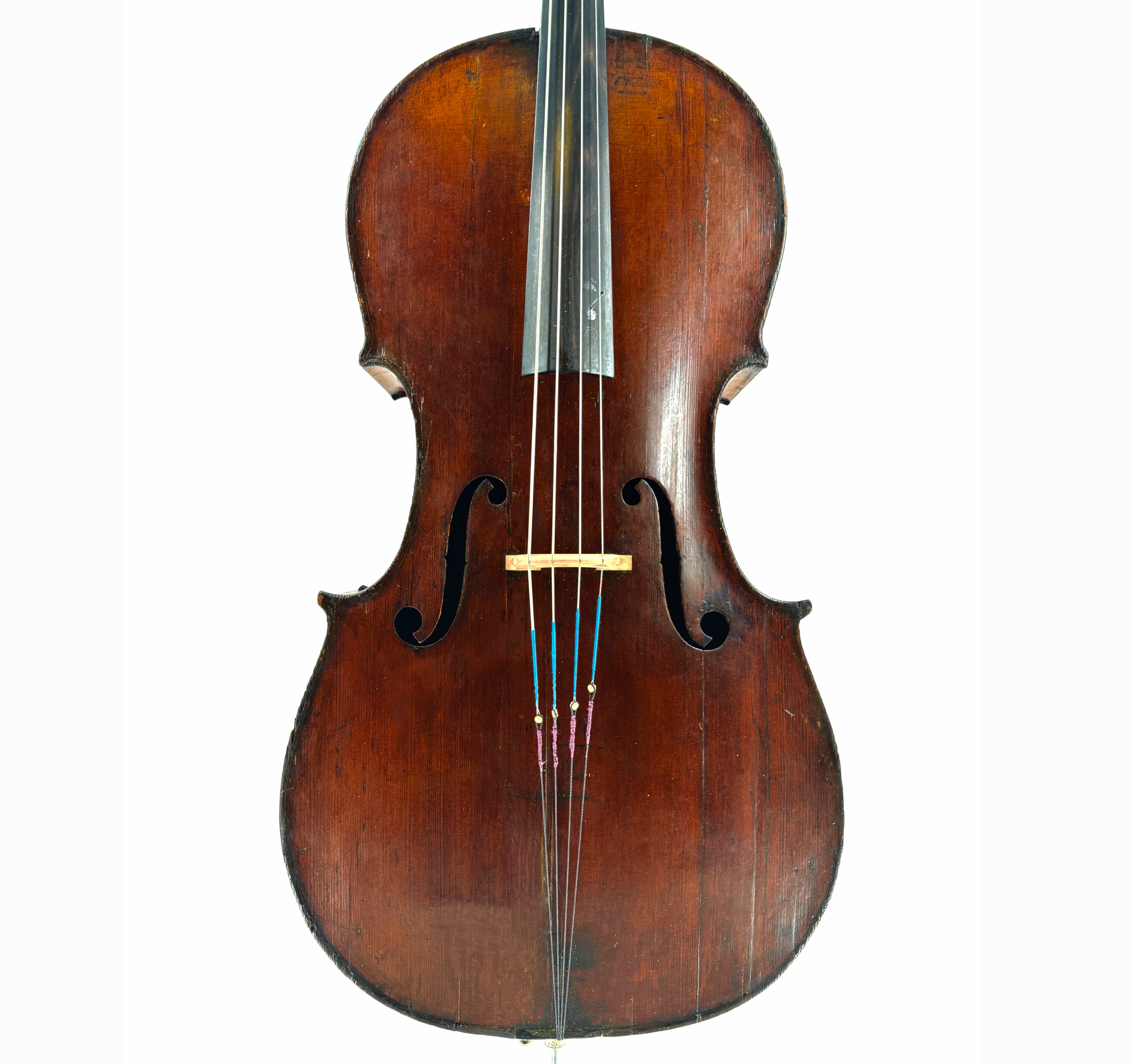The Natural Tailpiece

Many of history's most successful iterations of the string instrument concept utilize strings which span the complete length of the sounding body. By the 15th-17th centuries, when the European violin was codified by a small group of Italian luthiers, an intimate knowledge of non-Western musical instruments was not yet possible.

After inspecting a few notable examples of Eastern string instruments (the Slavic balalaika, the Balkan tambura; the Chinese ruan, etc.) we were inspired to salvage the full-length string concept and explore its potential in the violin context.


The results were stunning.
Because each string terminates at a fixed point (the saddle) as opposed to a floating object (a tailpiece), string independence is stunningly free. This makes double stops dramatically more resonant as each string contains its own independent set of harmonics.
Tuning stability is also greatly enhanced, as one string's tension is irrelevant to the tension of adjacent strings.
Volume and sustain are also significantly liberated. The typical wolf tone eliminator weighs from 3-8 grams. Players know these devices have a serious potential to blunt the sound of the string they're affixed to. Now, transfer this logic to the tailpiece, which can weigh up to 140 grams - you have an immense stifling affect inserted across all strings.
String feel is perhaps the most impressive achievement of this modification. Wood is a highly inelastic material compared to woven polyaramid fibers. The Kevlar string used in the Naked Tailpiece relaxes string rigidity, offering a dramatically more comfortable and manageable string action.

In our understanding, the reasons violin family instruments have taken so long to dispatch with the heavy tailpiece are several:
- Geared tuning pegs were a necessary precursor to the system, eliminating a need for fine tuners. Geared pegs are increasingly installed on contemporary master instruments as well as retrofitted to vintage instruments.
- A requirement for twice the length of string, especially traditional animal intestine strings, was prohibitive - both cost and availability were concerns.
- Inexpensive and widely available Kevlar and other polyamine synthetics only arrived in the late 20th century. Furthermore, the global materials science supply chain has only very recently matured.
Featured product





A liberated design utilizing woven Kevlar fiber. A component that expands overtones, resonance, sustain, vitality, responsiveness, and string independence - the Natural Tailpiece appeals primarily to common sense.
Softer string feel and a more natural playing action accelerates learning and technical mastery. The Natural Tailpiece essentializes the string suspension and tension mechanism, paring away the muting mass of plastic and metal that chokes and stifles your cello's innate vitality.
Tuning stability is also vastly improved - the tension of a single string does not influence any other string as it does when attached to a common floating plastic or wooden tailpiece. Each string terminates at a solid fixed point - the saddle - isolating the string's tension and unique harmonic and overtone profile.
Traditional silk wrap tidies up the appearance and adds an aristocratic feel; silk available in PZ Purple or Black.
Some considerations for your new tailpiece:
- Kevlar string exhibits a break-in period much like a steel string; a few hours of playing and tuning is a typical break-in period. However, once broken in, the Kevlar tailpiece will not respond to changes in humidity and temperature as does wood and steel, resulting in greater overall tuning stability.
- Geared tuning pegs are highly recommended with this tailpiece. Some cellists are adept at traditional peg tuning without fine tuners; most however will find geared tuning pegs necessary and ultimately a much more sensible and efficient peg arrangement. We are happy to install geared pegs for you at Peter Zaret and Sons Violin Shop in Cleveland, Ohio - a simple outpatient procedure we can do while you wait.
- Several equally effective methods for inserting the string ball end into the tailpiece loop are possible. You may wish for the Kevlar loop to capture the full ball end of the string, or wrap around the outer groove of the ball end (as shown in product photography). If you use strings with a loop end (gut strings etc.), please request a ball end to be shipped with your tailpiece free of charge. Ultimately, you will likely find that strings sit under tension more simply and elegantly and therefore last longer with the Natural Tailpiece.
Pickup available at 5767 Mayfield Road
Usually ready in 24 hours

Natural Tailpiece for Cello
Black / 4/4
5767 Mayfield Road
5767 Mayfield Road
Mayfield Heights OH 44124
United States

